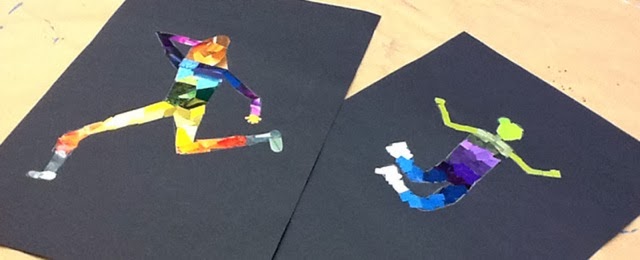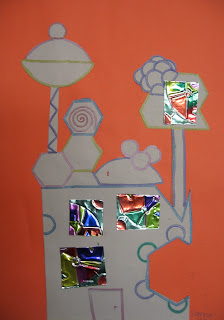I found that one of my third grade classes was attempting to recycle their 20 breakfast trays by making a mountain of them that overflowed into the hallway.
I encouraged them to try stacking them up so they would take up much less room.
I also started to take the rinsed and stacked trays to use for paint palettes.
This inspired me to do a styrofoam tray recycling project with the third grade students.
We used the trays to make printing plates rather than the styrofoam sheets we often order.
The students drew designs and pictures (no numbers or letters) on each section.
The first printing task was to color each section with marker and print it on white paper.
When they had printed all of their sections in colored marker I rolled black ink onto their plate and each student printed it on to the large brown paper to make a collaborative piece.




















































